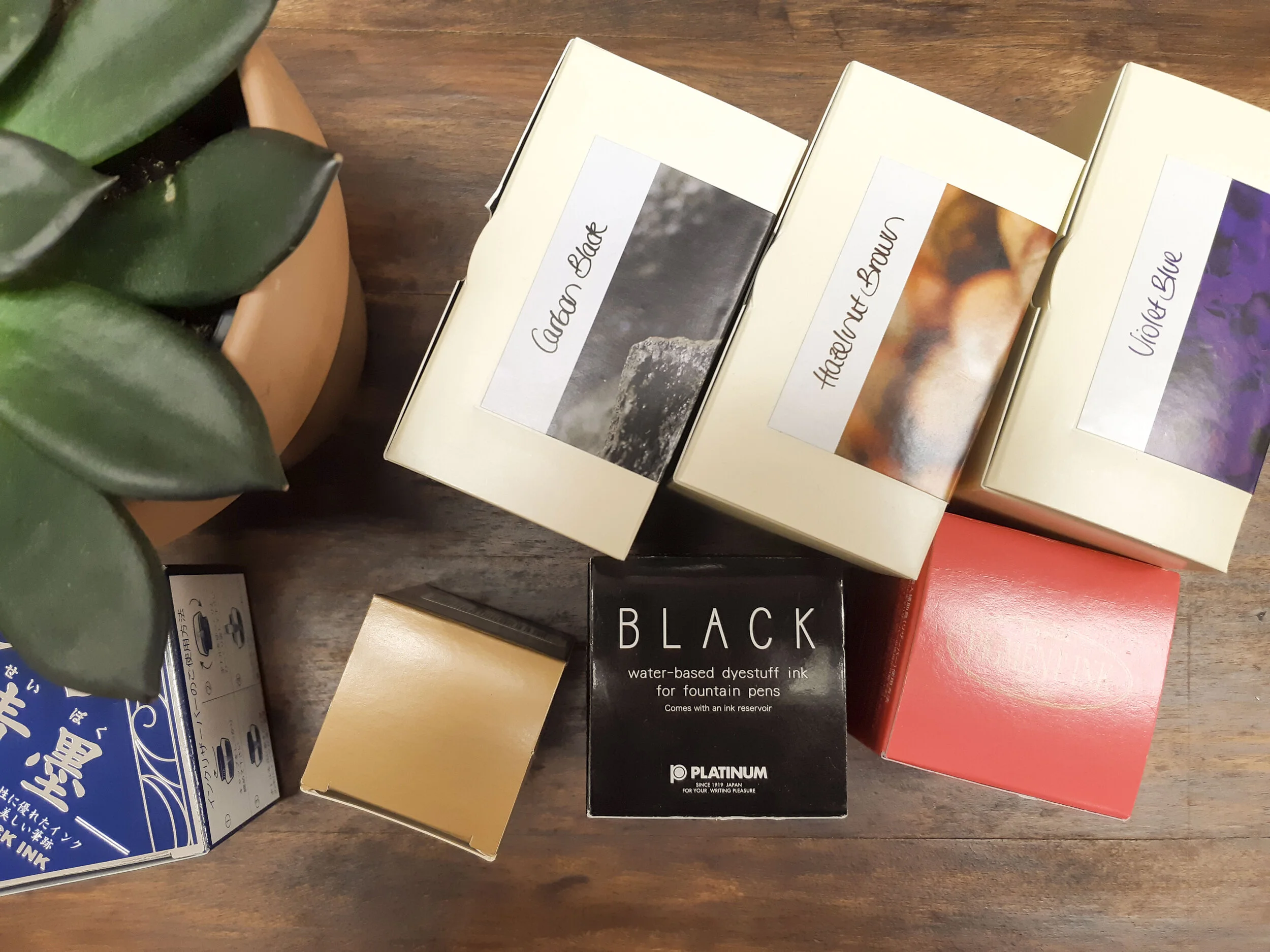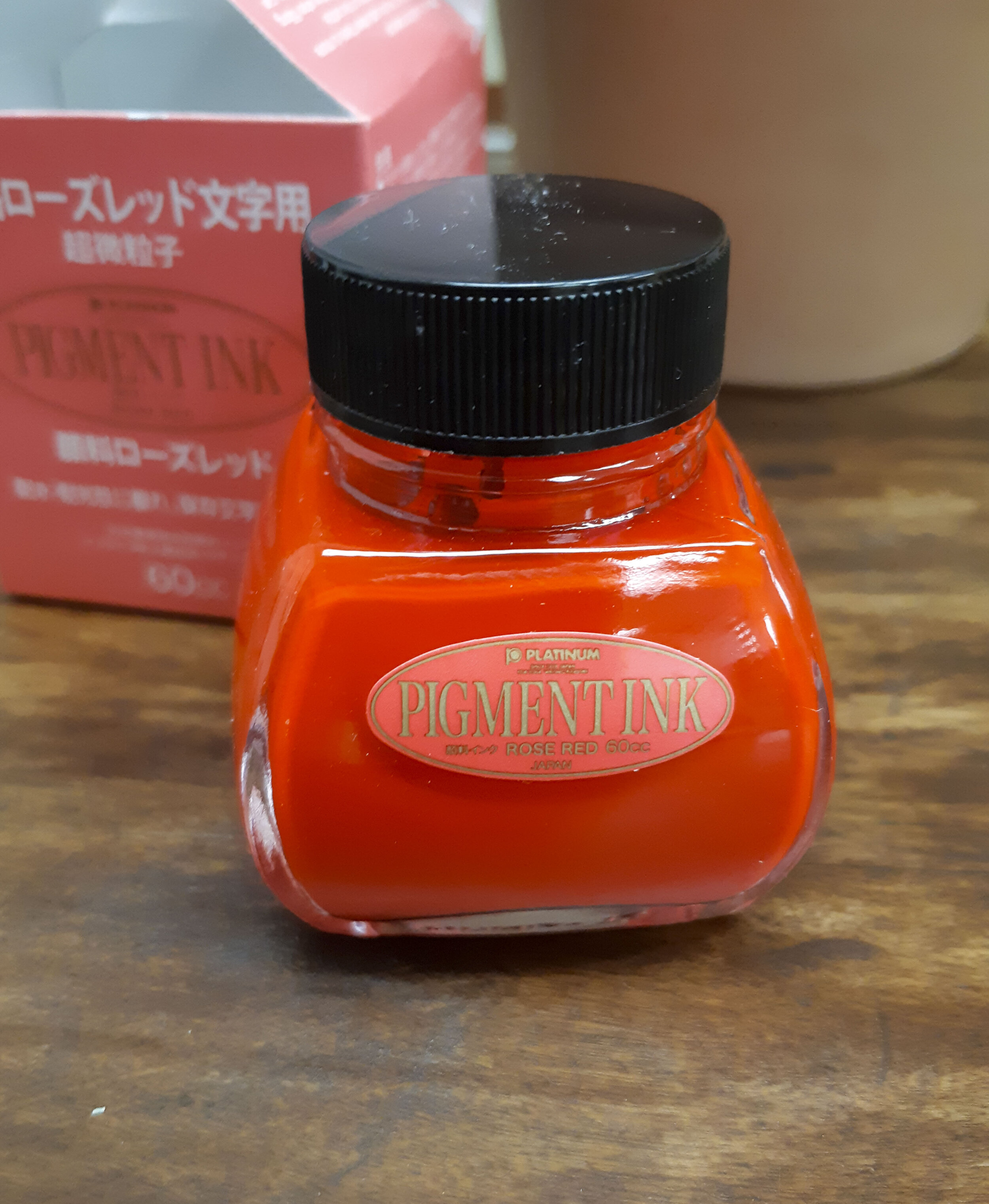Best Waterproof Permanent Inks for your Fountain Pen
Have you ever spilt your water, coffee, or tea on your favourite notebook? We have, and we share your pain. It really does happen to the best of us! Hopefully the notes, dates, and memories were easily dried and legible, but one bad dip off the dock is enough to send any fountain pen lover looking for a permanent ink!
Believe it or not, there are inks that are safe for fountain pens and also stand up to liquidy mistakes! What makes a fountain pen ink stand up better to spills is all in what it’s made of—or, rather, what it isn’t made of! Most fountain pen inks are dye-based, meaning that they have little particles of dye suspended with the right ratio of water for you to both see the colour and get a lovely flow. Adding more water will misalign the ratio, spreading out the dye, and making your hard work a big mess.
For this same reason, you just have to be a little more careful with your pen maintenance with a permanent ink inside. If a dye-based ink dries in your pen, you’ll likely be able to remove it with the right amount of water in the feed to break up the particles. But in the same way that water won’t budge your permanent ink on the page, it won’t budge the dried ink in your pen either! Try to make sure that you use your permanent inks regularly so they don’t dry, and be sure to clean them out thoroughly before storing them if you know you won’t be using them for a while.
Finally, remember to never use any India ink or dip pen ink in your fountain pen, no matter how tempting it is! These inks have a totally different composition from fountain pen ink, and the particles are so thick and large that they can clog your pen beyond repair. Inks that are safe for fountain pens will always say so on their packaging.
What’s your favourite permanent ink? Let us know in the comments!
Platinum Carbon Black
When it comes to permanent inks, nothing beats Platinum Carbon Black. The ink is completely waterproof when it is dry, a feat that few inks can boast to. Kata Law, creator of Wanderlust Watercolours and one of our incredible teachers, swears by this ink for her own watercolour artwork because once it’s dry it doesn’t budge! You can watercolour right over it and it doesn’t move at all, yet it is perfectly safe for your fountain pens.
As the name suggests, the ink is created with carbon and it only comes in black. We recommend a higher quality paper with a higher GSM for this ink because it is prone to ghosting on thinner paper, but you can use it on virtually any paper if ghosting doesn’t bother you. It is one of the best-selling inks in the store because of its resiliency and reliability. Trust us, your notebook could be so soaked that the pages start to fall off, but your words will still be there!
Platinum Pigment Ink
Though black is a staple in most fountain pen enthusiast’s collections, sometimes we just want a pop of colour! Similar to Carbon Black, Platinum also has pigment-based ink that will stay solidly on the page once it’s dry. It comes in fun colours like Rose Red, which will dry a brilliant pink.
Though it doesn’t hold up quite as well as Carbon Black, it is a bit friendlier to the paper it is writing on and it is still almost completely waterproof. It’s a great option for headings and details to drawings, or for journal entires if you prefer to write bright!
Sailor Pigment ink
Similar to Platinum’s Pigment Ink, Sailor’s pigment ink are a waterproof option for your favourite pens. Sailor boasts nano-pigment for their permanent inks, known to be even finer than Platinum’s variety, and these inks are part of Sailor’s luxury collection. They come in an attractive glass bottle and are safe for pens that write even the tiniest of ultra-extra-fine lines.
Sailor’s pigment ink also comes in a variety of colours. Souboku in particular is popular for its deep blue-black colour and shading properties. The black Kiwaguro is another great option for a reliable waterproof black.
Graf Von Faber Castell Ink
Of all of the inks on this list, Graf von Faber Castell has the greatest variety of colours. You can choose from various blues like Gulf Blue or Royal Blue, rich reds like India Red or Garnet Red, or even the crowd favourite professional Stone Grey. These inks are water resistant, and no matter which colour you choose it will run rich and saturated. They are a relatively balanced ink that can lean to the wet side in a wider nib, but they are luxuriously well behaved inks overall.
Where the rest of the inks on this list only come in the form of bottles, Graf ink also comes in international standard sized cartridges, which might be a good option if your spills tend to happen when you’re off adventuring in places that you can’t take bottles. As with any cartridge, they will write a bit drier than the bottled ink, but you will still have the same lovely colour and flow. You’ll also have the reliability that you’ll still be able to read everything you have written down if there is an accident, though the ink will spread out a bit on contact with liquid.
Diamine Registrar's Ink
An ink that we recently added to our collection at Phidon is Diamine Registrar’s Ink. This one is a great option for it’s special properties alone: it changes colours! This ink is an iron gall ink, and the history of iron gall stretches back centuries. A true iron gall ink will change colours as it oxidizes, and Diamine Registrar’s Ink will be light blue when wet and a deep blue-black when dry.
This ink, like all iron gall inks, tends to write a bit dry. That’s great for if you’re using a wet-writing pen or paper that isn’t of the best quality, as it helps keep the ink under control. Be extra careful with cleaning this particular ink out, though. Iron gall inks are acidic: not enough to harm you or anything it touches, but it could corrode your nib over time if you leave the ink to dry on it for months.






